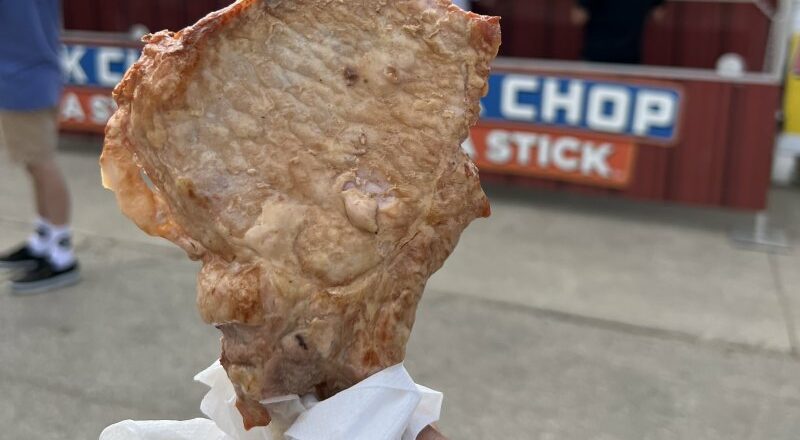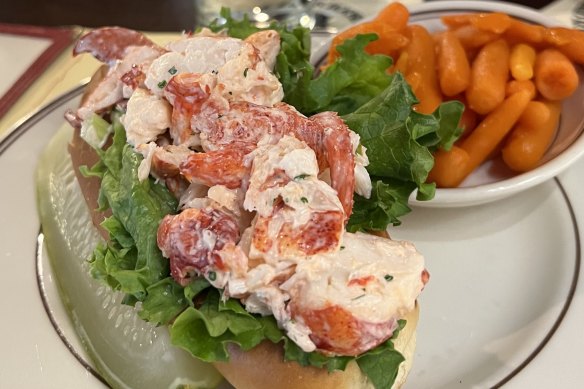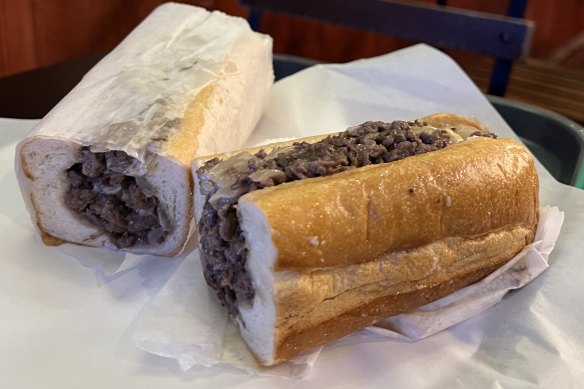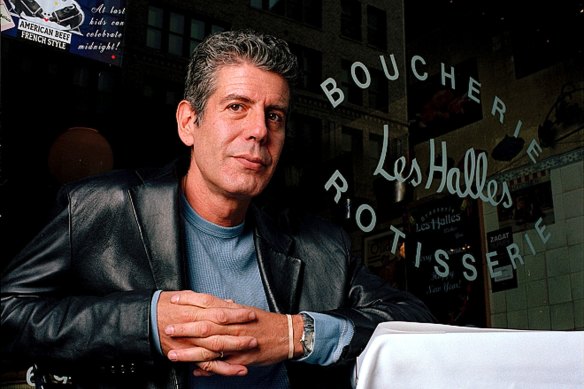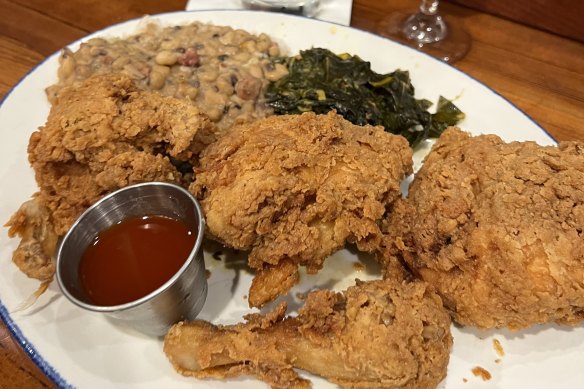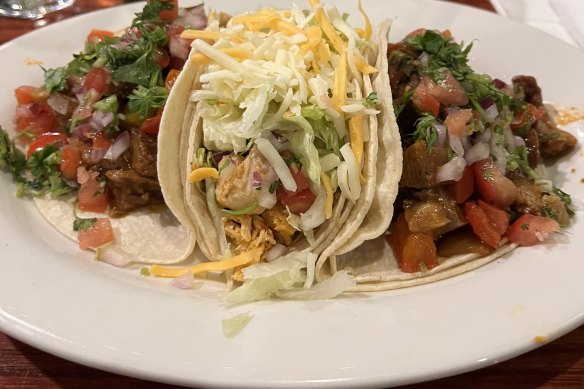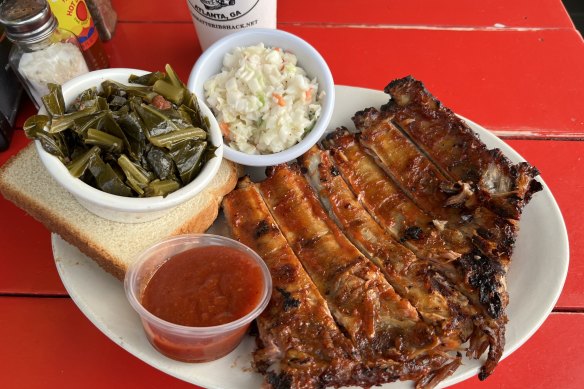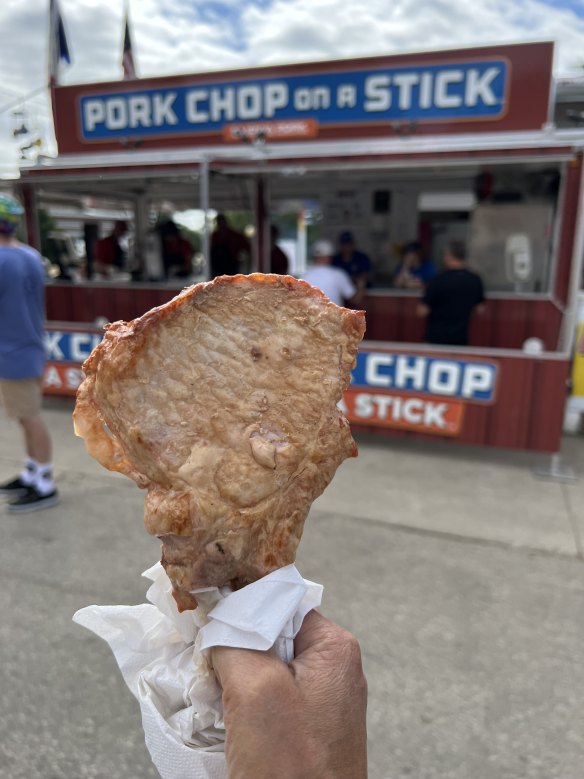From gumbo to pork on a stick: An American local food odyssey
By Farrah Tomazin
Save articles for later
Add articles to your saved list and come back to them any time.
Des Moines, Iowa: On a searing hot day in America’s Midwest, I’m standing in line at the Iowa Fair, waiting patiently to sample one of the state’s most iconic dishes: pork chop on a stick.
Iowa, after all, is the pork capital of the US and its 10-day fair has become a political rite of passage for presidential hopefuls seeking to woo voters while showing off their barbecue skills or posing for photos with mouthfuls of meat.
Former president Donald Trump campaigning in Iowa on August 12.Credit: AP
Think of the Royal Melbourne Show or the Sydney Royal Easter Show on steroids – a sensory overload of food, farming and music with a touch of Las Vegas and a dash of Nashville’s honky-tonk strip thrown in for good measure.
But it’s my culinary curiosity that has drawn me here mostly, and my personal mission to never leave a state I’ve been lucky enough to work in without sampling a dish that helps define it.
Chilled lobster roll in Boston.Credit: Farrah Tomazin
In Florida, for instance, where former president Donald Trump was charged for allegedly mishandling classified documents, I headed to Miami’s Cuban district, Little Havana, searching for a plate of ropa vieja (“old clothes”): shredded beef, slow-cooked with onions, peppers, olives, tomato sauce and spices.
In Boston, after touring Moderna’s mRNA vaccine lab ahead of its expansion into Australia, I discovered the unbridled joy of chilled lobster rolls and New England clam chowder: the thick, milk-based soup packed with clams, potatoes and onions, as opposed to the clear broth variety served in other parts of the country.
In Philadelphia, where I attended the homecoming of an adventurer who spent seven years walking around the world with his faithful rescue dog, I couldn’t go past the Philly cheesesteak: a potential heart attack masquerading as a hoagie roll filled with succulent beef strips and melted cheese. Napkins are needed. Plenty of them.
A Philly cheesesteak, a hoagie roll filled with beef strips and melted cheese.Credit: Farrah Tomazin
My American food odyssey was inspired, in part, by the late Anthony Bourdain, the Kitchen Confidential author and celebrity chef who spent much of his life interpreting people and places through meals cooked and shared.
Before his suicide in 2018, Bourdain travelled to far-flung corners of the globe documenting his culinary adventures on shows such as No Reservations; The Layover; and Parts Unknown.
Anthony Bourdain at his former New York restaurant in 2001.Credit: AP
His message was simple: food doesn’t just fuel the body; it can enrich the soul, turn strangers into friends and teach you a lot about the human condition.
My favourite type of American cuisine is southern “soul food”, which has its roots in the country’s dark past when enslaved African people were given weekly food rations, such as corn meal, lard, molasses, greens and pork.
Over time, cooking methods were refined and soul food evolved from simply being a diet to more of a cultural phenomenon, although the term itself didn’t emerge until the black pride movement of the 1960s.
Buttermilk fried chicken with collard greens and Hoppin’ Johns from Poogan’s Porch in Charleston.Credit: Farrah Tomazin
Want a massive plate of buttermilk chicken served with Hoppin’ Johns (black-eyed peas and rice) or a comforting bowl of shrimp and grits (rich and creamy ground corn porridge)?
Head to Charleston, where the first shots of the Civil War rang out on Fort Sumter, to any one of the charming restaurants set amid the townhouses and cobblestone streets of this incredible city.
Looking for a bowl of gumbo, a Creole-Cajun stew loaded up with tomatoes, greens, sausage, chicken or seafood and served over rice?
This flavour-packed meal can be found across the US, including, fortunately, my neighbourhood in Washington, DC, but it’s the official dish of Louisiana, so you’re unlikely to find a better version anywhere else.
Having spent most of my life in Melbourne, I often took for granted how spoilt for choice we are in Australia’s culinary capital, which boasts more than 3500 restaurants serving cuisines from more than 70 countries.
Lengua (beef tongue) and pollo asado (chicken) tacos.Credit: Farrah Tomazin
America, by comparison, has no shortage of eateries to feed the masses, but quality, authenticity and nutritional value can differ widely.
Indeed, it wasn’t until I travelled to the US-Mexico border towns of Laredo and El Paso for stories on America’s immigration crisis that I discovered what truly good tacos are meant to taste like – each bite nestled in a warm tortilla and topped off with a sprinkle of cilantro or lime wedge to bring out the flavour, without a dollop of sour cream in sight.
BBQ spare ribs from Fat Matt’s Rib Shack in Atlanta.Credit: Farrah Tomazin
Regional differences are also notable when it comes to the humble barbecue. In Tennessee and North Carolina, barbecue often means slow cooked pork shoulder, pulled into strips and mixed with a vinegary sauce.
Texas tends to use brisket and sausages, cooked with indirect heat and sliced to serve, while Memphis barbecue is often spiced and presented “dry” without sauce.
Just don’t bother asking for a small portion of meat, as I once naively did during the midterm elections at a no-frills blues diner called Fat Matt’s Rib Shack, in Atlanta, Georgia, much to the amusement of the lovely woman behind the counter.
“There’s no such thing, ma’am,” she informed me with a hearty laugh.
The US also has a variety of weird, wacky and wonderful foods representing each state, officially or unofficially: the sweet lobsters of Maine, the blue crabs of Maryland, the Key lime pie of Florida.
Which brings me back to Iowa, the pork production capital of America.
According to the Iowa Pork Producers Association, the state has more than 5400 pig farms and more than 24 million pigs being raised at any one time.
Some of them end up from farm to plate at the famous Iowa State Fair, an event that draws more than 1 million people every year and has about 250 food stalls selling everything from double-bacon corn dogs to deep-fried pickles and funnel cakes.
The most popular food venue, however, is the pork tent, where political candidates often flock to build their profiles ahead of the all-important Iowa caucuses, which kick off the US presidential election cycle.
This year, Trump was here posing for photos with adoring fans; Florida Governor Ron DeSantis flipped burgers on the grill; and US senator Tim Scott shared a plate of freshly cooked pork loins with the assembled media.
Inside the tent, families and fairgoers line up for pork sandwiches and burgers, and a questionable invention called “pork picnic in a cup”: a plastic cup layered with frito chips, shredded BBQ pork, baked beans, creamy coleslaw and topped with a brown sugar pork belly.
But it’s the chop on a stick that draws them here most: a 280-gram French rib pork chop, cut at least three centimetres thick and marinated in brine before being seared on the grill for a few minutes on each side.
The famous Pork Chop on a Stick at the Iowa State Fair.Credit: Farrah Tomazin
The Iowa chop became a mainstay at meat counters and restaurants in the 1970s thanks to a successful marketing campaign launched by a group of women called the Iowa Porkettes. Now it’s a fan favourite at the Iowa State Fair and, after finally sinking my teeth into its tender goodness, it’s not hard to see why.
“We probably have about three hogs for any given person in Iowa and we’re selling a piece of pork about every three seconds here, from 10 in the morning until nine o’clock at night,” farmer Nate Ohms tells me while manning the grill. “But you can’t go past the pork chop on a stick.”
You certainly can’t, much to the chagrin of my ever-expanding waistline.
Get a note direct from our foreign correspondents on what’s making headlines around the world. Sign up for the weekly What in the World newsletter here.
Most Viewed in World
Source: Read Full Article
